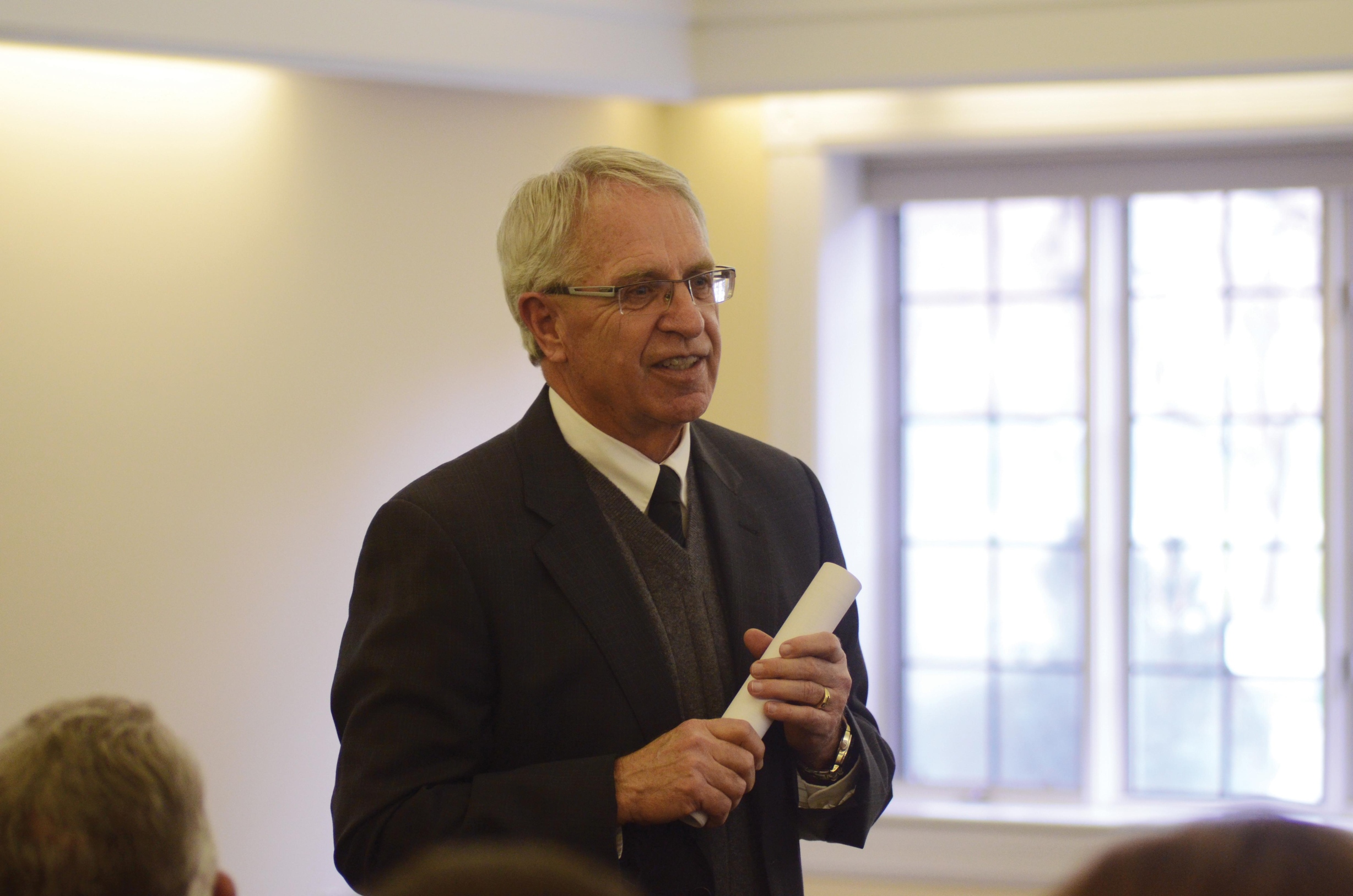Albrecht outlines legislative funding
USU President Stan Albrecht reported to the College of Humanities and Social Sciences faculty and staff on Tuesday evening in the David B. Haight Alumni Center on the legislative outcomes of the last session and how they will impact USU.
More funding was awarded to higher education, which will impact buildings, retirement, health care and salary.
“An 11 percent increase to higher education funding, when revenues were basically flat, is a huge message to us,” Albrecht said.
Albrecht said at the legislative session that more than $26 million was awarded to higher education, with $5.6 million of that to help USU’s main and regional campuses.
USU was awarded $1.4 million in mission-based funding, which is funding used to emphasize a university’s mission and capitalize on its strengths.
“The great thing about this is it allows us to fill some holes,” Albrecht said.
USU was compensated $1.5 million for the animal, dairy and veterinary sciences program, which moves the program into the second phase of development.
Graduate education received $1 million. Albrecht said this makes USU more competitive with other universities when it comes to assistantships and fellowships.
After requesting $26.5 million, USU can now fully fund buildings on regional campuses in Brigham City and Price. Albrecht said groundbreaking for the new Brigham City campus will be in June, and the building in Price will begin in April.
Buildings aren’t the only positive change for USU. David Cowley, vice president for business and finance, reported on the health care results of the legislative session.
“From time to time, they’ve treated higher education different,” Cowley said.
Cowley said because of health care funding, employees with health care benefits will only have to pay 10 percent of the premium.
Cowley said premiums will stay the same, with the exception of the Blue Plan, which will experience a rise of $2.50 to $16 a month. He said the increase was to help get the Blue Plan, which is subsidised by other plans, self-sufficient.
Along with health care, additional retirement costs were also funded.
The Utah State Board of Regents sets Tier I tuition based on the decisions of the Legislature. Tier I tuition for USU will see a 4 percent increase for the 2014-15 academic year.
Albrecht said USU will see a 1.5 percent increase in Tier II tuition. He said the university will work closely with the student government to use the funds toward student interests. Albrecht said because tuition is rising, the cost of scholarships will also rise.
Neil Abercrombie, director of Government Relations at USU, said the Utah Science, Technology and Research Initiative – USTAR – will receive the same level of funding, but there will be changes in the structure.
Concurrent Enrollment received $1.3 million dollars.
“It will help resolve the concern of Utah rural superintendents by providing more concurrent enrollment courses in rural high schools,” Abercrombie said.
Abercrombie said the licensing requirement for the landscape architecture program decreased. He said they were able to get a state certification for USU’s music therapy program.
Abercrombie said the legislative agenda for 2015 will include funding for graduate education, research and a new science building on campus.
— lsnyder94@gmail.com

